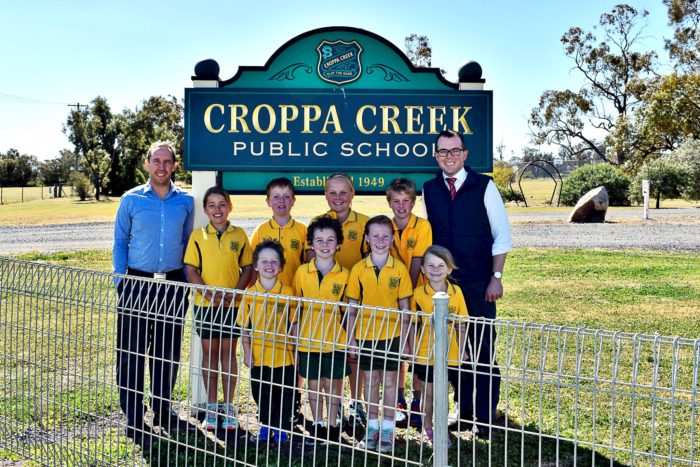
Northern Tablelands MP Adam Marshall with Croppa Creek Public School Principal Mike Sky and students last week.
Wednesday, 30 August 2017
TWO schools in the region will be some of the first in the state to take advantage of the NSW Government’s $46 million Connecting Country Schools program, which promises to bring technology and internet connections at country schools into the 21st century.
Member for Northern Tablelands Adam Marshall recently visited Croppa Creek Public School to announce it would join North Star Public School in a pilot scheme for the much anticipated digital connectivity program.
“This is a brilliant day for modern learning in Croppa Creek and the Northern Tablelands – with two of our schools the first of 931 schools in country NSW to benefit from this new program,” Mr Marshall said.
“As access to online resources and distance experts is a growing factor in our children’s education, I have been pushing for our region’s remote schools to be among the first to benefit from this scheme.
“The Connecting Country Schools program will install new wireless routers across our learning areas, cutting down on black spots for laptops, tablets and mobile phones.
“Furthermore, schools relying on satellite connections will have their linkages upgraded – ensuring faster, more reliable internet for all connected to the Local Area Network.”
Mr Marshall said the $46 million investment would ensure 931 schools in rural and regional NSW would be connected to the scheme – but interest has been particularly high in the Northern Tablelands.
“I’ve been contacted by parents, staff and friends of several schools looking to expedite the rollout in their area, due to the tremendous opportunities reliable internet offers students,” Mr Marshall said.
“Through greater connectivity, the tyranny of distance in regional education can be defeated, allowing savvy school principals will finally be able to close the remaining gaps in education outcomes.
“Our children’s education is worth any expense and this program will ensure our students are no worse off than their city rivals as they compete for jobs and higher education.”